This article was medically reviewed by Sarah Gehrke, RN, MS. Sarah Gehrke is a Registered Nurse and Licensed Massage Therapist in Texas. Sarah has over 10 years of experience teaching and practicing phlebotomy and intravenous (IV) therapy using physical, psychological, and emotional support. She received her Massage Therapist License from the Amarillo Massage Therapy Institute in 2008 and a M.S. in Nursing from the University of Phoenix in 2013.
There are 11 references cited in this article, which can be found at the bottom of the page.
This article has been viewed 92,640 times.
Ocular or “classic” migraines are severe headaches accompanied by changes in vision (seeing flashes of light or shadows, or an “aura”). Mild cases can be treated with pain relievers and rest. Stronger or more frequent ocular migraines can be treated with prescription medications and other professional treatments, as well as by making some lifestyle changes. Ocular migraines should not be confused with “retinal” migraines, which cause symptoms of short-term blindness or reduced vision in only one eye. Retinal migraines are the sign of a serious medical issue--if you have one, you should seek medical assistance immediately.[1]
Steps
Getting Immediate Migraine Relief
-
1Recognize the onset of the aura phase. Ocular migraines are characterized by visual problems, known as the “aura.” You may have trouble seeing, experience zig-zag lights that aren’t really there, “see stars,” or have other visual effects. These may or may not be accompanied by pain. Part of treatment is learning to recognize the particular symptoms that accompany your ocular migraines.[2]
- The aura phase usually takes place in the 10-60 minute window before the ocular migraine begins.[3]
-
2Take your preventative migraine medication, if you have it. Your doctor may have prescribed you a medication (usually a triptan or ergot derivative) to take whenever you start to have a migraine. If so, take this as soon as you experience the onset of the aura. Doing so may stop the headache, nausea, or other symptoms that may follow the aura phase.[4]
- These prescriptions are available in a variety of forms: pills, dissolving tablets, sprays, or shots.
- Make sure to follow your doctor’s dosing instructions.
- You should not use these medications if you are pregnant or have certain types of heart disease or uncontrolled high blood pressure. Discuss your medical history with your doctor before using migraine medication.
Advertisement -
3Rest and get away from your triggers. Even if you aren’t experiencing pain or headache, find a quiet, dark place where you can close your eyes and rest as soon as you begin to experience ocular symptoms. If you know you have specific migraine triggers (such as specific sounds, smells, or staring at a screen too long), resting away from these will also help treat the migraine.[5]
- Even if you can’t lie down, try moving away from bright sunlight or harsh lighting as well as noisy situations.
-
4Use an over-the counter (OTC) pain reliever if needed. Mild migraine pain can be stopped or at least reduced with a standard dose of aspirin, acetaminophen, or a non-steroidal anti-inflammatory (NSAID), such as ibuprofen or naproxen sodium. Follow the package instructions and do not take more than the maximum recommended dose.[6]
- You can also take specially formulated OTC migraine pain relievers, which may combine several medications (typically aspirin, acetaminophen, and caffeine).
- If you are taking any other medications, talk to a medical professional about which OTC medications are safe and effective for you to use.
-
5Place a cold compress on your head for additional pain relief. Soak a clean cloth in cool water. Wring out the excess, then lay the cloth on your forehead or behind your neck. Leave it there for as long as the cloth stays cool to get some instant relief.[7]
- Using a cold compress while lying down in a quiet, dark place can be especially effective.
-
6Massage your scalp. Spread out your fingers and rub them all over your scalp and temples. Push down with lots of pressure. This can be a surprisingly effective way to relieve mild migraines.[8]
Preventing Migraines with Professional Treatments
-
1Ask your doctor about prevention drugs. If you have frequent migraines that don’t go away with easy treatments, your doctor can prescribe medications to help prevent migraines. If your migraines are severe (causing you to miss work or school, for instance), or if you take pain relievers for migraines more than 2 times a week, you might be a good candidate for these drugs. Commonly prescribed ones include:[9]
- Certain antidepressants
- Anticonvulsants
- Beta blockers
- Calcium channel blockers
-
2Undergo hormone therapy, if your migraines relate to hormonal changes. Some women find that their migraines seem to be linked to their menstrual cycle. Others will experience worsened migraines during menopause. If this is the case for you, talk to your doctor. They may advise a program of hormone replacement therapy to prevent migraines.[10]
- Keep track of your symptoms using a symptoms tracker app or a diary to help you determine a pattern. This will help you decide if hormone therapy could work for you.
-
3Work with a therapist if your migraines seem linked to mental health. Stress, anxiety, and depression are all sometimes linked to migraines. Managing these issues can eliminate the migraine problem. Cognitive behavior therapy (CBT) and “talk therapy” can both be effective at treating migraines.[11]
- Ask your doctor to refer you to a therapist, if you aren’t sure who to see.
- You can also try neurofeedback.[12]
Making Lifestyle Changes to Prevent Migraines
-
1Avoid your migraine triggers. Researchers still don’t know exactly what causes migraines, but they seem to be linked to environmental factors. Triggers include things like bright lights, loud sounds, strong fumes, irregular sleeping and eating patterns, and certain foods. If you know what sorts of things tend to cause you to have a migraine, you can avoid or manage the triggers. For instance:[13]
- If bright lights trigger your migraines, reduce the amount of time you spend in full sunlight, in fully lit rooms, or looking at screens on computers, smartphones, and tablets. You can also buy different colored lens that will block certain wavelengths that cause issues for you.[14]
- If you tend to have migraines when you are tired, get on a regular sleep schedule so you go to bed and wake up at the same time everyday.
-
2Stop behaviors that can worsen migraines. Certain activities and habits can make migraines more likely, frequent, or severe. Eliminating these from your life can help stop your migraine problems.[15]
- Limit your consumption of alcohol and caffeine. While some patients benefit from minimal caffeine consumption, partaking more than 3 times per week can increase migraines.
- Stop smoking.
- Stop using oral contraceptives.
- Don’t skip meals.
-
3Manage stress. Many people who have migraines find that they seem to be caused by stress or worsened because of it. Learning to deal with stress and anxiety will not only help reduce your migraine problem, it can also improve your overall quality of life. Ways to manage stress include:[16]
-
4Try alternative treatments such as acupuncture and massage. Acupuncture can help lower pain, while massage may lower the frequency of migraines. Everyone responds differently to treatment, so do what works for you.[17]
- You can even try self massage.
-
5Try supplements if your doctor approves. Some vitamins and minerals can help prevent migraines. Vitamin B-2 (riboflavin), Coenzyme Q10, and magnesium are all great options. Always talk to your doctor before taking any vitamins or supplements.[18]
- Your doctor can help you determine a proper dosage to meet your needs.
Preventative Drugs and Therapies and Migraines Triggers
References
- ↑ https://www.nhs.uk/conditions/retinal-migraine/
- ↑ https://americanmigrainefoundation.org/resource-library/understanding-ocular-migraine/
- ↑ https://medlineplus.gov/magazine/issues/fall15/articles/fall15pg4-5.html
- ↑ https://americanmigrainefoundation.org/resource-library/retinal-migraine/
- ↑ https://www.drugs.com/cg/ocular-migraine.html
- ↑ https://www.aoa.org/healthy-eyes/eye-and-vision-conditions/ocular-migraine?sso=y
- ↑ https://familydoctor.org/condition/migraines/?adfree=true
- ↑ https://familydoctor.org/condition/migraines/?adfree=true
- ↑ https://www.womenshealth.gov/a-z-topics/migraine
- ↑ https://my.clevelandclinic.org/health/diseases/5005-migraine-headaches
- ↑ https://www.womenshealth.gov/a-z-topics/migraine
- ↑ https://www.ncbi.nlm.nih.gov/pubmed/21309444
- ↑ https://www.aoa.org/healthy-eyes/eye-and-vision-conditions/ocular-migraine?sso=y
- ↑ https://www.ncbi.nlm.nih.gov/pmc/articles/PMC2478741/
- ↑ https://americanmigrainefoundation.org/resource-library/retinal-migraine/
- ↑ https://www.womenshealth.gov/a-z-topics/migraine
- ↑ https://www.womenshealth.gov/a-z-topics/migraine
- ↑ https://my.clevelandclinic.org/health/diseases/5005-migraine-headaches
- ↑ https://www.womenshealth.gov/a-z-topics/migraine
- ↑ https://familydoctor.org/condition/migraines/?adfree=true
About This Article
Ocular migraines can be pretty uncomfortable if untreated, but fortunately there are a few ways you can relieve your symptoms. Place a cold compress or a cool, damp washcloth on your forehead for some instant relief. Massaging your scalp and temples with your fingers can also help to relieve the symptoms of mild migraines. Find a quiet, dark place to close your eyes and rest. If you can’t get to a dark room, try to avoid triggers like loud noises, bright lights and screens, and strong smells, since these can make your migraine worse. You can also take a pain reliever, like ibuprofen or naproxen sodium, to help reduce your symptoms. If your migraine doesn’t go away within a few days or you get them regularly, visit a doctor for treatment. For more tips from our Medical co-author, including how to prevent migraines in the future, read on!
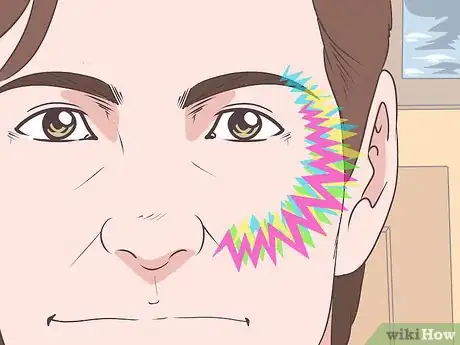

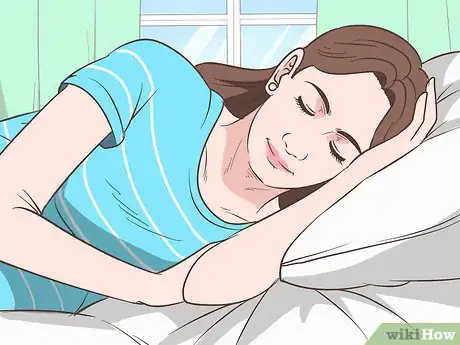
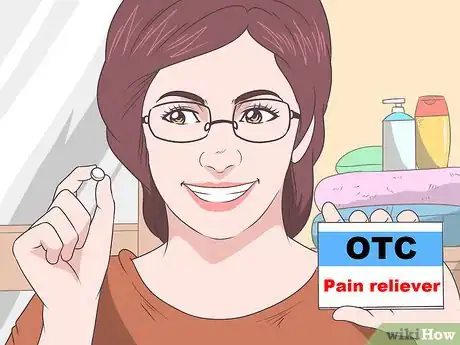
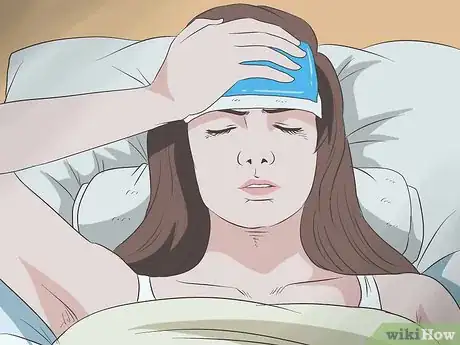
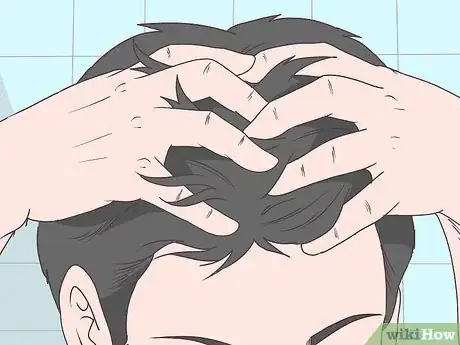
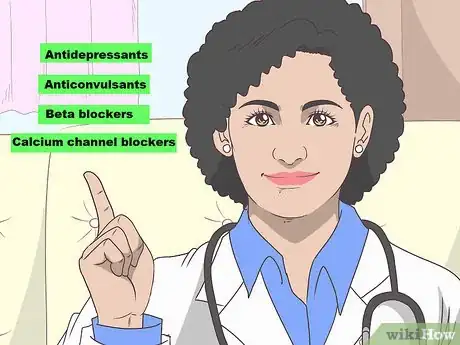

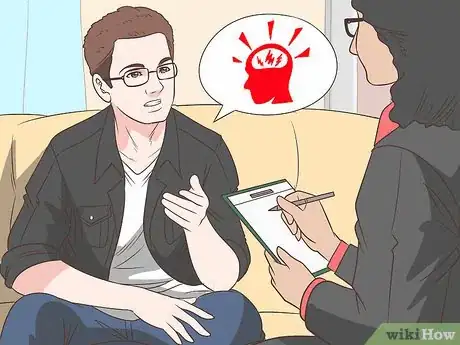
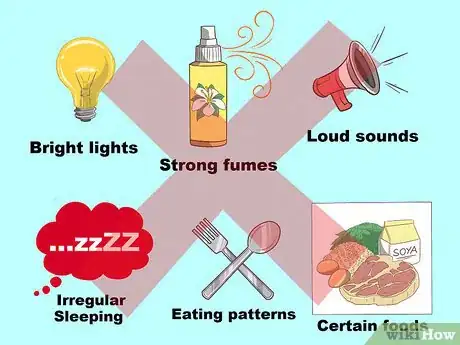
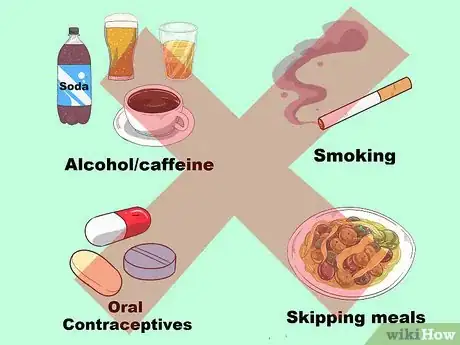
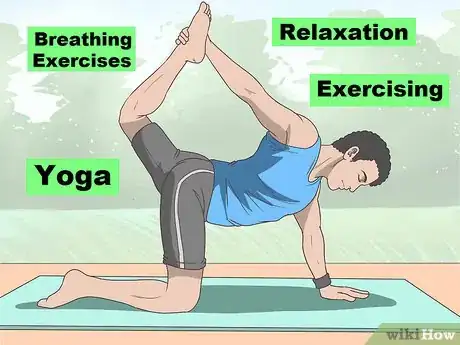
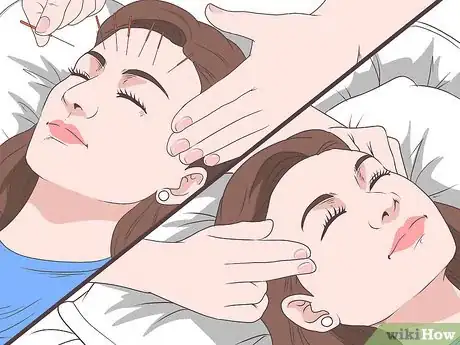
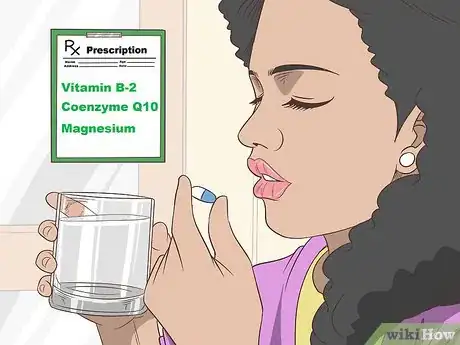
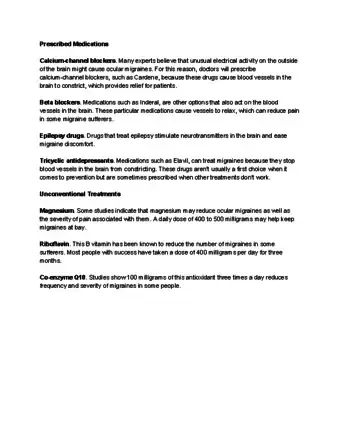
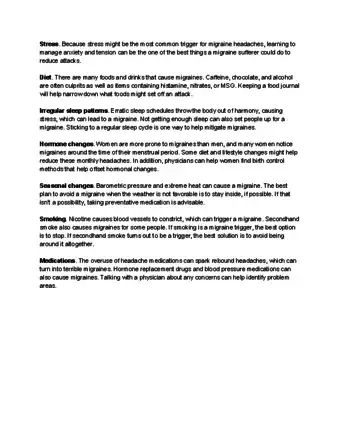

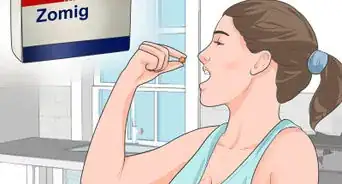



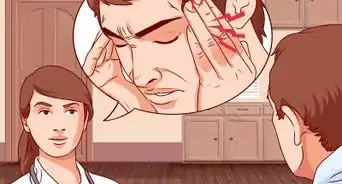


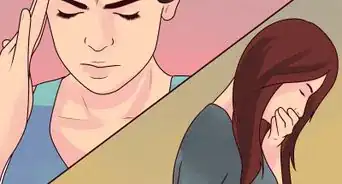














































Medical Disclaimer
The content of this article is not intended to be a substitute for professional medical advice, examination, diagnosis, or treatment. You should always contact your doctor or other qualified healthcare professional before starting, changing, or stopping any kind of health treatment.
Read More...